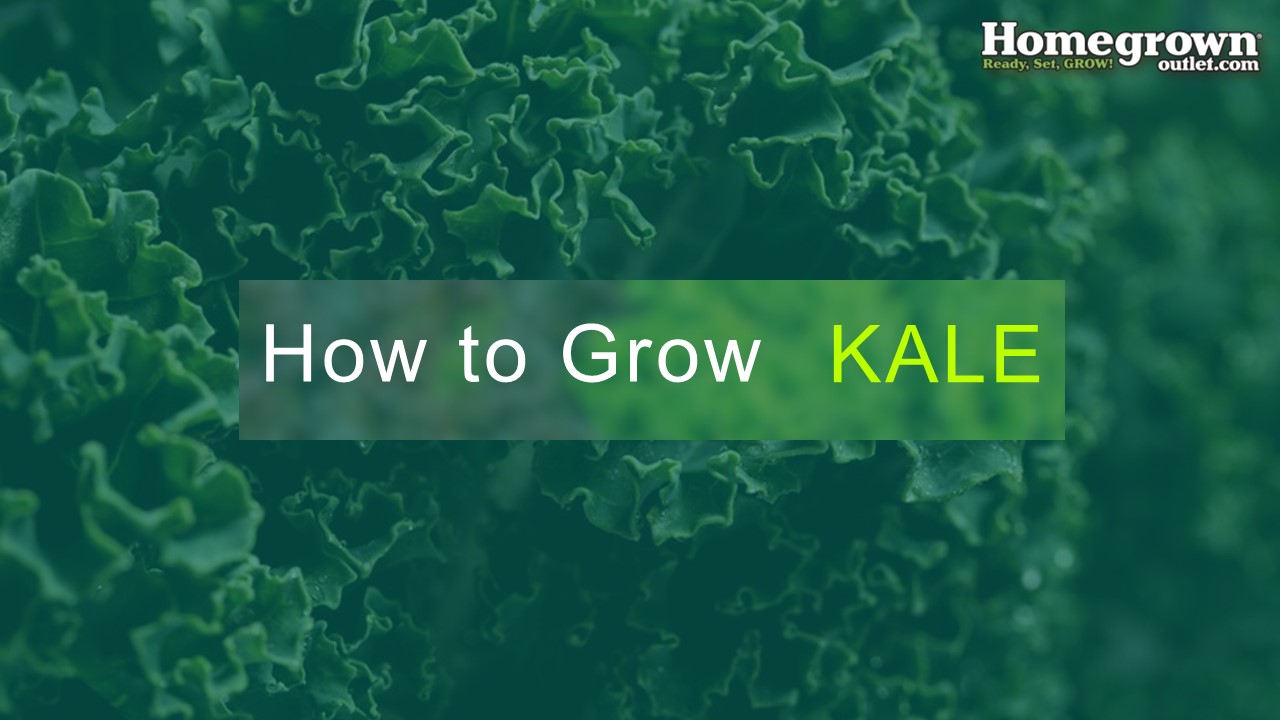How to Grow Kale? - PowerPoint PPT Presentation
Title:
How to Grow Kale?
Description:
Unlock the secrets to growing kale with our comprehensive guide. From choosing the suitable varieties to soil preparation and maintenance, this resource provides step-by-step instructions for a bountiful harvest. Elevate your gardening skills and enjoy the benefits of fresh, homegrown kale in your meals. – PowerPoint PPT presentation
Number of Views:2
Title: How to Grow Kale?
1
How to Grow
KALE
2
INTRODUCTION
Welcome to the kale growing guide, where you'll
find amazing green leaves and nutritious
benefits. Growing kale is a rewarding and
straightforward endeavor, making it an excellent
addition to any garden.
This presentation will explore the essential
steps to successfully cultivate this
nutrient-rich leafy green. From selecting
suitable varieties to providing optimal growing
conditions, you'll discover the keys to a
thriving kale harvest.
Whether you're a seasoned gardener or a novice,
join us as we delve into the art and science of
growing kale for a bountiful and healthful
experience.
3
GROWING KALE - STEP BY STEP GUIDE
Sunlight
Spacing
Fertilizers
Mulch
1
2
3
4
5
6
7
8
Location
Temperature
Soil
Watering
4
HOW TO GROW KALE?
Growing kale is easy and rewarding. Choose
well-drained soil with a slightly acidic to
neutral pH, and plant seeds in early spring or
late summer. Opt for a sunny location with 12-18
inches spacing between seeds. Keep the soil
moist, mulch to preserve moisture, and treat with
a balanced fertilizer every 4-6 weeks. Watch for
pests and address them promptly.
Harvest when leaves reach a desirable size,
typically 2-3 months after planting. Pick outer
leaves first, allowing inner ones to keep
growing. You can enjoy a continuous harvest of
this nutrient-rich green in your garden with
minimal effort.
5
WHEN TO GROW KALE?
Kale grows best in cool seasons, where
temperatures vary between 60F and 75F (15 C to
24 C). Ideal planting times vary by region, but
late summer to early fall generally works well
for a flavorful harvest in temperate climates. In
milder areas, kale can thrive throughout winter.
Consider local frost dates when planting to
ensure optimal growth. Whether sowing seeds or
transplanting seedlings, timing is crucial for a
successful kale crop, known for its resilience
and versatility.
6
Curly Kale
Tightly curled leaves, robust flavor, great for
salads and soups.
BEST VARIETIES OF KALE
Dark, bumpy leaves, slightly sweet taste,
excellent for cooking and juicing.
Purple-tinged stems, mild flavor, adds visual
appeal to the garden.
Lacinato Kale
Red Russian Kale
7
KALE GROWING STAGES
Keep soil warm and moist for 5-8 days provide 6
hours of sunlight.
Harvest at 18 inches growth continues through
summer.
2
4
Planting
Transplanting
Harvesting
Mature Plants
Seedlings
1
3
5
Sow seeds directly or start indoors before spring
frost.
Transplant outdoors with 12-18 inches spacing
mulch for weed control.
Gently pull or cut lower leaves discard
discolored leaves.
8
HOW TO STORE KALE?
Freeze
Refrigerate
Ensure kale leaves are dry before refrigerating
to prevent wilting. Cover the crisper in a paper
towel and keep it in a plastic bag in the
crisper, away from ethylene-producing fruits, for
a more extended storage period.
Blanch harvested kale leaves, cool them in ice
water, dry them, and freeze them on a baking
sheet. Transfer frozen kale to an airtight
container for storage it stays fresh for six to
eight months.
Refrigerate
Dehydrate kale using an oven at the lowest
temperature. Place clean leaves on a baking
sheet, periodically checking to avoid burning,
until they become dry and crispy.
9
HOW TO HARVEST KALE?
Harvesting kale is simple with the right timing
and technique. For baby kale, start harvesting
25-30 days after sowing, while mature kale is
ready around 60 days after planting. Harvest once
in early summer or late spring and again in
autumn.
- Follow these steps
- Pull mature outer leaves downward and outward to
harvest ripe plants, leaving at least five
central leaves. - Avoid picking the innermost portion.
- Cut along the base without severing the root.
- Use scissors or a knife for soft soil or newly
established plants. - Remove discolored or insect-eaten leaves to
promote healthy growth. - Check for pests regularly and address issues
promptly.
10
FAQS
Q. How long does it take kale to grow?
Kale typically takes about 60 days to grow after
planting. Baby kale can be ready for harvesting
in 25-30 days after sowing.
Q. Does kale regrow after cutting?
Yes, kale can regrow after cutting. When
harvesting mature kale, it's recommended to leave
at least five central leaves on the plant. This
allows the plant to continue the process of
photosynthesis and promotes new growth, enabling
a regrowth cycle.
Q. Why is my kale not growing?
Possible reasons for slow or stunted kale growth
include inadequate sunlight, poor soil
conditions, insufficient watering, pest
infestation, or disease.
11
THANK YOU
(518) 782-9365?
info_at_homegrownoutlet.com?
homegrownoutlet.com?































